The world famous Ramnagar Ramlila – which many consider to be the oldest in the world, being over 200 years old – began in Varanasi on Thursday. Traditionally, it begins on Anant Chaturdashi and continues for 31 days.
From the stage, artistes, sound and light technicians to its sets and decoration, everything is exclusive about this Ramlia. It is known for its lavish sets, dialogues and the visual spectacle. It has been recognised as an intangible world cultural heritage by UNESCO.
The Ramlila is staged in the backdrop of the famous Ramnagar fort, under an open sky and with only traditional lamps (panchlight) being the light source. Young boys play the character of Lord Ram, his brother Laxman, Bharat and Shatrughna. They practice for the Ramlila under the guidance of the priest.
Through all the 31 days, the Ramlila draws a large number of people from Varanasi. They walk to the Ramlila venue daily from the ancient city after crossing the Ganga. It is not uncommon to find foreigners in the audience as many visitors come from far off places to watch the enactment.
Preparations begin almost two months in advance with a team of dedicated people, including priests, looks after the staging of the Ramlila. Even during its enactment, a priest recites couplets from the Ramcharitmanas.
On Thursday, the opening day of the Ramlila, Kshir Sagar Jhanki was recreated in Ramnagar Pokhra (pond). The theme: Lord Vishnu is lying on Shesh Shaiiya and Goddess Laxmi is sitting near him in Kshir Sagar. There was an Akashvani, “I will be reborn as Ram in Raghukul for the elimination of demons”.
As this happened, the audience chanted ‘Sita Ram, Sita Ram’.
On the last day the festivities reach a crescendo as Rama vanquishes the demon king Ravana. Over a million pilgrims arrive annually for the vast processions and performances.

The Ramnagar Ramlila is staged in the backdrop of the famous Ramnagar fort, under an open sky.
Here are some other interesting facts about the Ramnagar Ramlila:
• In the Ramlila, the entire Ramacharitmanas is recited, instead of the usual 10 for abridged production. In Ramnagar, a number of stages have been constructed by the town, each named after the major sites of events in the Ramayana epic. The permanent structures and several temporary structures serve as sets, to represent locations like Ashok Vatika, Janakpuri, Panchavati, Lanka etc., during the performance. Hence the entire city turns into a giant open-air set, and audience moves along with the performers with every episode, to the next location.
• During the period, hundreds of sadhus, called Ramayanis, descend into the town to watch and recite the Ramcharitmanas text. Many an audience carry a copy of the Ramacharit Manas, simply called Manas, and follow stanza after stanza, after the characters delivering their dialogue. The legend and the festival is a part of their spiritual practice.
• Preparations begin, weeks before its commencement, with important roles often inherited by families, for example, the role of Ravana was held by the same family from 1835 to 1990, and the roles of Hanuman, Jatayu, and Janaka traditionally belong to one Vyasa family.
• During the course of the performance, there is a double transformation of the space within the city, as it first transforms from a city to theatre and then to mythic geography, as the scale of the performance is gradually increased to mythic proportions, coming down only in the end, when Rama finally returns home.
• At the end of each episode, an aarti is performed, chants of ‘Har Har Mahadev’ or ‘Bolo! Raja Ramchandra ki Jai!’ resound in the air, as the audience join in. Thereafter, a jhanki, literally a peep or glimpse, tableaux of frozen iconic moments from the ‘Manas’, is presented, which not only distil and crystallise the message of the story for the audience, but is also appreciated for its spectacular effect.
• It is the most traditional rendition of the Ramayana, and has been a subject of study by scholars from all over the world for many decades now.

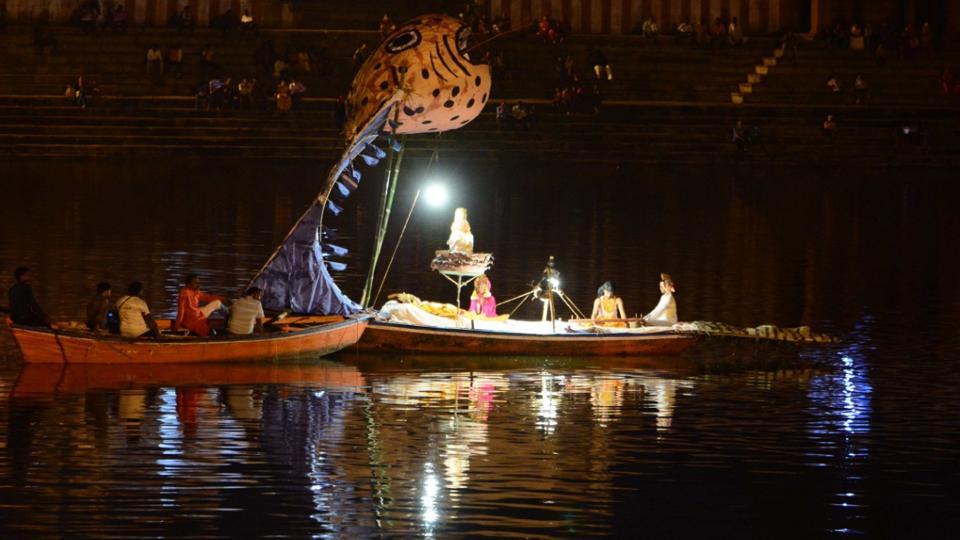




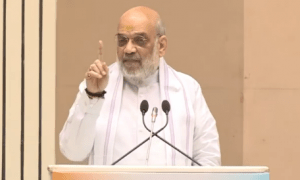

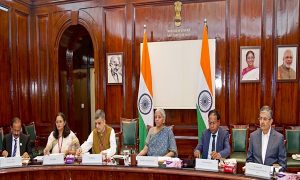

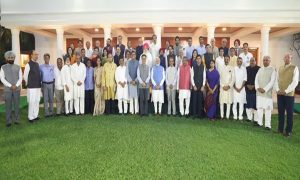



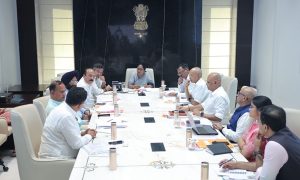







 WhatsApp us
WhatsApp us